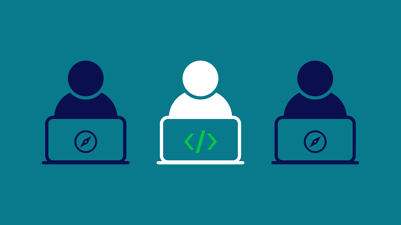Ever heard of a Parsons problem? They're a type of code problem that is becoming increasingly popular in the world of coding education.
Parsons puzzles are a great way to assess your students' coding abilities. They are difficult enough to challenge the best students, but still accessible to those who are struggling. Additionally, these puzzles are a great way to assess your student's ability to debug code, as they are often given code with errors that they have to identify and fix.
What are Parsons Problems?
Parsons problems are great formative assessments in which they’re asked to arrange blocks of scrambled code—allowing them to focus on the purpose and flow of the code (often including a new pattern or feature) while not worrying about syntax.

When students think they have completed the task correctly, Parsons problems offer feedback—highlighting any problematic lines. Students can then try to fix their code and re-submit.

This type of assessment has several benefits over traditional coding questions. First, it assesses a student's ability to understand how code works, not just their ability to write code. Secondly, it is much more difficult for students to simply copy-paste code from the internet, as they have to understand how the code works in order to assemble it. Finally, it is a great way to assess a student's ability to debug code, as they are often given code with errors that they have to identify and fix.
Why Adopt Parsons Problems?
While Codio offers auto-grading for more open-ended coding exercises, writing code is a time-consuming task for students. So in addition to asking students to predict the output of existing code, Parsons problems offer another way to expose students to code without requiring large amounts of time.
In fact, research shows that while Parsons problems take “significantly less time than fixing code with errors or than writing the equivalent code... there was no statistically significant difference in the learning performance, or in student retention of the knowledge one week later.” [1]
Additionally, as students make their way through units and semesters, the amount of work they do decreases. However, Parsons problems have been shown to be one of the most engaging features on interactive platforms despite the drop off in student completion of tasks. [2]
Creating Parsons Puzzles on Codio
Parsons Problems are available now on Codio as Parsons Puzzles and creating them is easy:
- Go to the drop-down for assessments like you would for any other assessment type and select Parsons Puzzle
- Name the puzzle and paste in the correct code
- Add distractor blocks (if you want) and click save
Parson puzzles are a great way for students to learn and practice coding. They are also a great way to assess student understanding of a concept. Check out some Parsons problems examples here.
Get Started With Parson Exercises Today!
If you are looking for a fun, engaging, and interactive way to teach programming, then look no further than Parsons Puzzles!
To learn more about how to add Parsons puzzles to your courses on Codio, see our full documentation: Parsons puzzles
References:
[1] Ericson, B. J., Margulieux, L. E., & Rick, J. (2017, November). Solving parsons problems versus fixing and writing code. In Proceedings of the 17th Koli Calling Conference on Computing Education Research (pp. 20-29). ACM.
[2] Ericson, B. J., Guzdial, M. J., & Morrison, B. B. (2015, July). Analysis of interactive features designed to enhance learning in an ebook. In Proceedings of the eleventh annual International Conference on International Computing Education Research (pp. 169-178). ACM.


